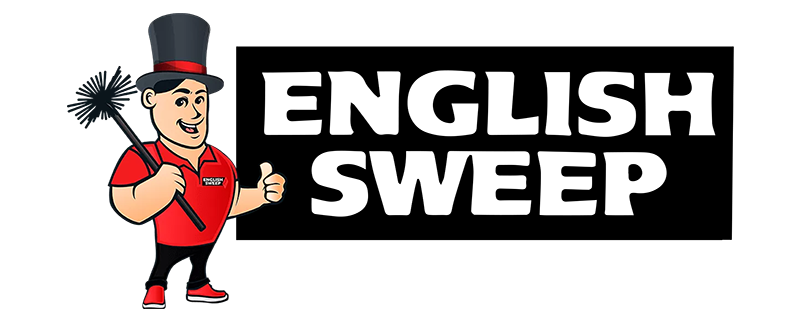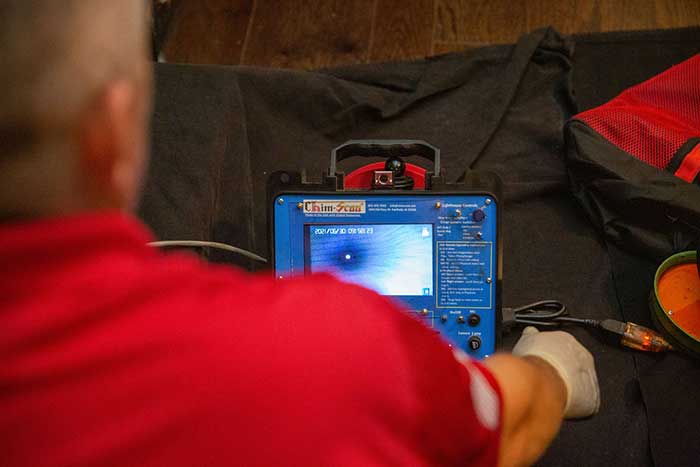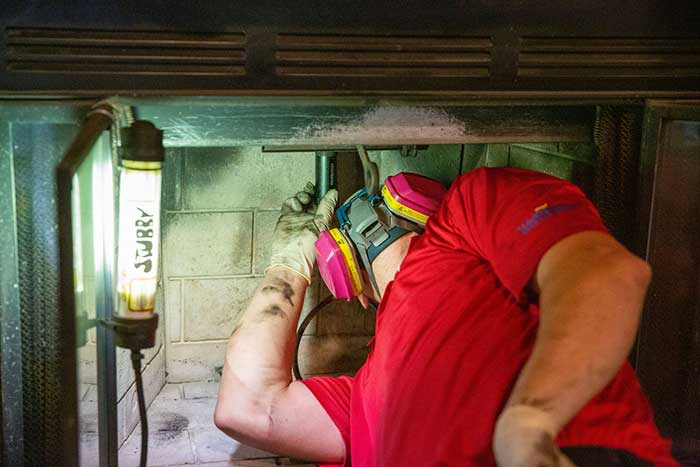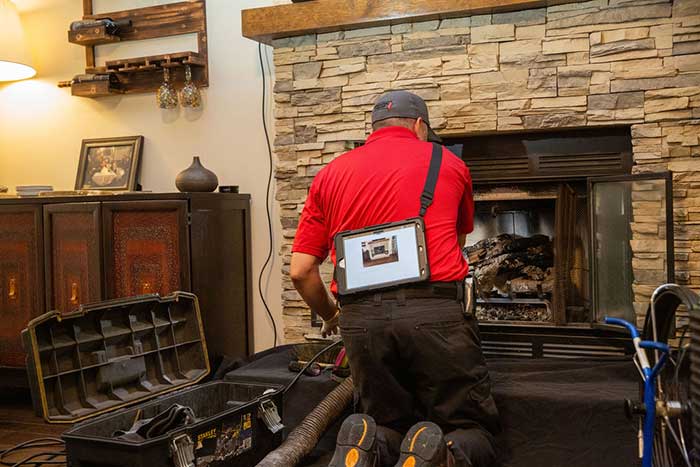Trust Our Certified Sweeps to Provide an In-Depth Chimney Inspection
When it comes to keeping your chimney and fireplace in great working order, chimney inspections are vital. Whether you’re sniffing out the source of smelly fireplace odors, trying to tackle a chimney leak, trying to figure out why smoke is coming back into your home, or you’re experiencing another issue, a chimney inspection is the first step towards finding a solution.
For homeowners in St. Louis, Kirkwood, Webster Groves, University City, and the many towns and cities nearby, English Sweep has got you covered. Our knowledgeable crew offers three levels of chimney inspections, ensuring your needs are met no matter what’s going on with your chimney system. When it’s time to schedule your annual checkup, call us at tel:636-225-3340 or book an appointment online.
Why Do I Need a Chimney Inspection?
Chimneys are complex structures and you might not know when something goes awry until the problem gets out of hand. Chimney damage is often caused by hidden dangers like high levels of creosote, cracking or crumbling flue tiles, or even missing or damaged components.
Imagine waking up to the ceiling near your fireplace covered in water spots after an overnight storm. A few more weeks go by and the ceiling starts to sag. It turns out that the flashing on your chimney is damaged and water has been seeping into your chimney for a while. This is the type of issue we routinely identify during an inspection – and one that could’ve been fixed before you racked up the hefty bill to repair your ceiling.
Of course, any fireplace or chimney damage can be dangerous, which is why you shouldn’t just call a professional chimney sweep when you spot issues or suspect a problem. It’s better to get ahead of the curve and invest in annual chimney inspections.
Why annual inspections? The Chimney Safety Institute of America (CSIA) recommends that chimney inspections should be performed once a year by a CSIA-certified chimney professional. It’s much easier – and cheaper – to resolve problems when they’re small.
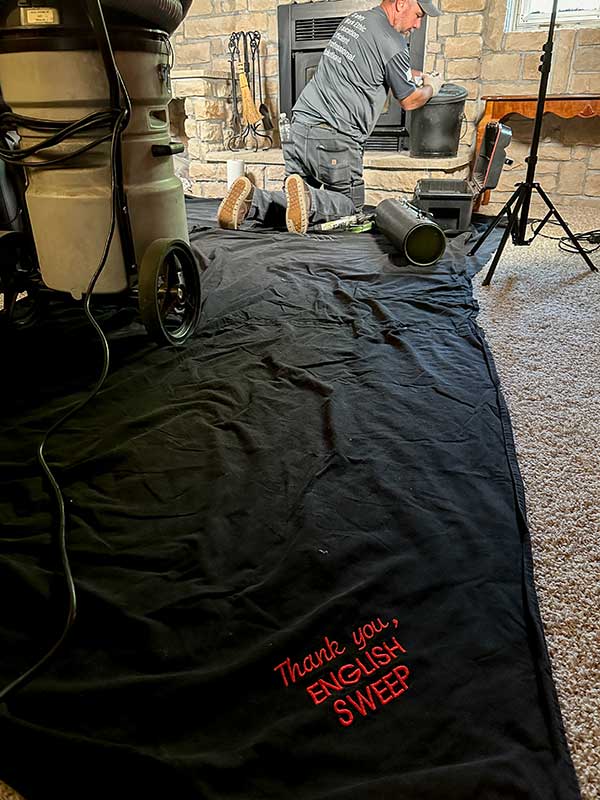
How Do I Know if My Chimney Is Safe To Use?
In an ideal world, a chimney will come with a built-in reporting system that constantly updates you on its condition. Unfortunately, we haven’t gotten there yet with technology. Sometimes, there are visual cues that something is amiss, like visible cracks, foul smells, and an unusual buildup of soot, but you can’t always go by the eye test to gauge the safety of your chimney. Unless it’s a trained eye – that’s where English Sweep comes in.
The only way to know if your fireplace is really safe is to bring in a chimney technician for a thorough inspection. We can get into the nooks and crannies of your chimney system to make sure all of its parts are in working order. Once we can get a baseline of how your chimney looks and functions, we can monitor it for changes that point to damage. Is there rust on your damper that wasn’t there a year ago? Then you likely have a water leak and we’ll know that we need to check potential entry points.
Let’s get started – call or schedule online today.
What Are the Parts of My Chimney?
Understanding the anatomy of your chimney can provide insight into how intricate these systems are. Here’s a crash course on the different components of your chimney and what they do:
- Chimney Cap. The chimney cap is a protective cover that sits on top of the chimney flue. It helps prevent water, debris, and animals from entering the chimney, while allowing smoke and gases to exit safely.
- Chimney Crown. The chimney crown is a sloped, cement or concrete slab at the top of the chimney structure that helps divert water away from the chimney.
- Chase Cover. These are similar to chimney crowns, but are used mainly for prefabricated chimneys and are made of metal.
- Chimney Flue. The chimney flue is the inner lining that combustion byproducts, like smoke and gases, pass through.
- Flue Liner. The flue liner is a protective barrier inside the chimney flue. It helps contain heat and protects against chimney fires, while also preventing gases and acidic fumes from seeping into the chimney structure.
- Smoke Shelf. The smoke shelf is a ledge just above the firebox that collects debris and prevents it from falling into the flue. It helps improve the draft of the chimney.
- Damper. The chimney damper is a movable plate or flap that can be opened or closed to control the flow of air and gases in the chimney. It helps cut back on heat loss when the fireplace is not in use.
- Firebox. The firebox is the area that holds the fire. It includes the firebrick or refractory panels that line the walls to withstand high temperatures.
What Are the Different Levels of Chimney Inspections?
There are three levels of chimney inspections and we offer all of them. What does each level of inspection entail and when is one needed?
- Level 1. For a level 1 inspection, we’ll look over all readily accessible areas of the chimney. This includes any parts that are already exposed or can easily be accessed without the use of tools or other equipment. The basic soundness of the system will be checked, and the sweep will note the presence of any potential clogs or buildup as well. If you are diligent about investing in annual inspections, and your system hasn’t experienced any major changes or trauma then a level 1 inspection should be all you need.
- Level 2. In a level 2 inspection, all the checks in a level 1 inspection are completed. In addition to this, we may use common tools to remove any doors, panels, or coverings hindering access to areas of your chimney system. Finally, level 2 inspections incorporate the use of camera equipment that is snaked up the flue to get an accurate and up-close look at any potential threats to the system’s health.
- Level 3. Level 3 inspections are required when parts of the chimney need to be removed to figure out what’s causing unresolved issues. This could mean removing the crown, taking down an interior wall, or something similar.
So, now you know the gist of what each inspection entails. But we want to address a few more common questions homeowners tend to experience. Check out what we’ve got to say below, and if you still find yourself in need of some professional help, give us a call or reach out online. We’ve got your back.
When Is a Level 2 Chimney Inspection Recommended or Required?
Most homeowners only need a level 1 inspection, but there are situations where we need to take the next step. A level 2 inspection is recommended after a major change has been made to the system. This could mean you switched fuel types, added an insert, invested in relining work, or made some type of renovation.
Another time these are required is after the system has experienced some type of trauma. If you’ve recently been through a flood, tornado, earthquake, or other type of severe storm or natural disaster, then a level 2 inspection is in order. We also recommend these after lightning strikes or chimney fires to rule out structural damage.

How Common Are Level 3 Chimney Inspections?
Level 3 inspections can seem pretty extreme, so many question just how often these are actually needed. Is it something to worry about?
Well, don’t stress too much because level 3 inspections are quite rare. They are only performed if both the level 1 inspection and the level 2 inspection don’t reveal the cause of the problems you’re experiencing. It takes a lot to get to this point, so chances are you’ll never need one.
That said, if you ever do need one, the CSIA-certified sweeps at English Sweep will explain why and discuss the pros & cons with you before doing anything. You’ll always be informed and empowered to make the best decisions for your home when we’re on the job.
What Is a Real Estate Chimney Inspection?
The process of buying a new home is as stressful as it is exciting. When you finally cross the finish line and close on a house, the last thing you want is the surprise of an unsafe fireplace in need of a long list of (expensive) repairs. Many homeowners falsely assume they’re good to go once a home inspection has been completed, but these are typically just a quick glance-over of the chimney that doesn’t cover everything or go as in-depth as a professional chimney company would.
You may be wondering how a real estate chimney inspection is different from the inspections we’ve described above and here’s the secret – it’s not. A real estate chimney inspection is a level 2 chimney inspection. It’s more comprehensive than a standard annual inspection, so that we can get a deeper look at the chimney system and you can rest assured knowing what to expect when you get the keys to your new home.
Who covers the cost of a real estate chimney inspection?
In some cases, the seller will choose to cover the cost of the chimney inspection as a way to attract potential buyers, but it’s also common for the buyer to cover the cost of the chimney inspection as part of their due diligence. You can also decide to split the cost of the inspection and, if repairs need to be made, you can decide who pays for those expenses as part of the deal.
If you’re a buyer or seller in need of a real estate chimney inspection, reach out to the team at English Sweep. Put your mind at ease by bringing in a CSIA-certified chimney technician. Schedule an appointment online or give us a call at 636-303-1459.
What If I Don’t Use My Chimney? Do I Still Need an Inspection?
You have a fireplace that you barely use. Certainly you can skip an annual inspection if you never light fires, right?
Actually, no… you can’t – or, at least you shouldn’t. Even a chimney that’s not used often needs a yearly checkup. That may seem excessive since there’s no soot or creosote, but those aren’t the only fire hazards associated with chimneys. Here are a few factors you need to consider:
Animals
Critters love chimneys. They’re dark, quiet, and do a good job of protecting them from the elements. A dormant fireplace is even more attractive because a family of raccoons or squirrels can settle into your chimney without the threat of flames and smoke.
Wear and Tear
Eventually, bricks chip and mortar crumbles. A well-maintained chimney will fall victim to natural wear and tear, so one that isn’t serviced regularly will only deteriorate faster.
Water
As much as we all wish we could stop rain and snow from happening, we can’t. Water is your chimney’s biggest threat. Brick absorbs water and moisture can cause all kinds of problems when it’s allowed to infiltrate your chimney system.
When Is the Best Time to Book My Chimney Inspection?
You can schedule a chimney inspection all year long. English Sweep is here to help you no matter what time of year it is!
That said, if you want flexibility in scheduling, we suggest you reach out to us in the spring and summer months. Once fall arrives and temperatures dip, our appointment book fills up quickly. You deserve to get the most out of the burning season, so if you wait until too late into the year, it will be harder to get an inspection scheduled.
Also, if our inspection uncovers a problem, you will need to book a follow-up to address the issue. It’ll be easier for you to book an appointment for repair work if your initial inspection is in the spring.
Can I Do a Chimney Inspection Myself?
Chimney inspections should only be performed by a trained chimney technician. A CSIA-certified technician has the necessary experience and knowledge to perform a careful and extensive examination that provides a detailed look into your chimney system. At English Sweep, we’ve been in the chimney business for over 40 years and there’s not much we haven’t seen. Our chimney technicians know exactly where and what to look for during an inspection that you or a member of another trade might overlook.
Get In Touch Today to Schedule Your Inspection
Annual inspections ensure you enter every burning season with peace of mind and confidence. Is your chimney ready for use next burn season? Don’t guess – be sure. Give us a call at 636-225-3340 to get your next inspection booked with our qualified crew. You can also book an appointment right here on our website.
And, yes, you need gas appliance services too. Our comprehensive services have got you covered – no problem.
